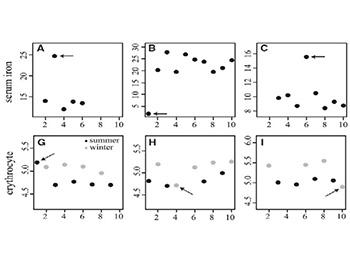
This non-Bayesian statistical algorithm is used for detecting anomalous values (or series) in longitudinal biological follow-ups. This method is practical, easy to implement and efficient as soon as 3 independent measures are gathered. It integrates periodicity and seasonality and allows to detect abnormal values (or series) in multiple correlated biomarkers.
The main interest of the method, is that it is only computes the appropriate indicators in a series of observations from one individual. Moreover, a single procedure is performed for the whole series, thus avoiding cumulated errors commonly involved in multitests. These intra-individual comparisons allow defining very tight / personalized abnormality thresholds without the need to use a priori samples for determining said thresholds (risk of poor representativeness). The method shall be used for the longitudinal assessment of physiological or biological markers during clinical trials or medical follow-up of patients or athletes in the context of medical control for humans or animals. A first study has been initiated on a cohort of more than 2200 professional football players for a 3 years campaign involving the assessment of 5 biological parameters.
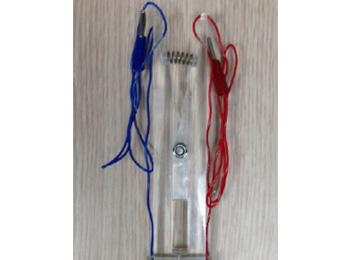
Existing techniques for measuring electrical conductivity of hydrophilic films, as ion exchange membranes (IEM), either work with solutions at low concentrations, or provide hard-to-reproduce measures, or require to take the membrane out of its equilibrating solution, thus inducing a bias in the measurement.
Our technology is a clamp with two articulated arms that characterizes the IEM with no bias in measurement thanks to a contactless technology enabling on-site measurement with no contact resistance induced. It is compatible with a wide range of concentrations of equilibrating solutions (from 0.01 M to 1 M) and is compatible for membranes or hydrophilic films with a thickness between 50µm and 1 millimeter, making on-site measures convenient and reliable. Measure precision is 1% for solutions with a concentration inferior to 0.1 M and 3% for 1 M concentrations.
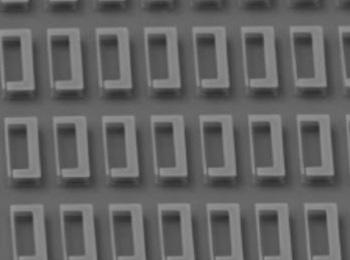
The most advanced commercial technologies for the detection of Terahertz (THz) and far infrared electromagnetic waves have major drawbacks : bolometers work at very low temperatures (4 Kelvin), while Golay cells are notoriously slow (20 Hz). Furthermore, those detectors are bulky, with a typical volume of the device in the 10cm x 10cm x 10cm range.
Our MEMS device has a volume in the mm3 range and has a very quick response time (MHz). It works at ambient temperatures. It is possible to tune precisely the resonance frequency of the sensor at production time.
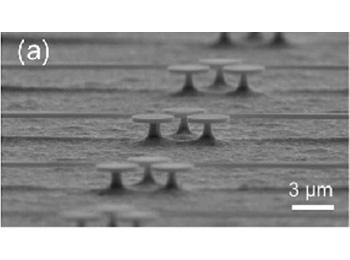
State-of-the-art nanofabrication tools (electronic beam lithography, reactive ion etching) can nowadays reach a few nanometer precision. This is still not accurate enough in optical applications such as metrology where collective behavior of resonators is targeted.
Our method reaches picometer precision (3 orders of magnitude better than state-of-the-art). The method consists in shedding light on resonators, so that a light-activated chemical etching process can take place. When using the proper wavelength, light intensity is locally amplified by the resonator. The result is that the resonator is gently etched while its nearby environment remains intact. This technique allows as well collective tuning of several resonators for spectral alignment.

Colorectal cancer is the second most lethal cancer type in developed countries and more than 70% of the polyps, when present in one’s colon or rectum, can eventually change into tumor cells (mostly adenomas).
Polyp’s visual detection during colonoscopy is the world’s gold standard in colorectal cancer diagnosis. However, today polyps detection rates during these preliminary visual inspections commonly fall below 80%, resulting in that almost 50% of diagnosed colorectal cancer were not detected during a first colonoscopy, and it is widely assumed that these results are significantly practicioner-dependant. Still, all existing solutions focus on contrast modification or vision angle widening for best inspection of the mucosa.
Our software aims at significantly enhancing polyp’s detection rate by visually alerting the practitioner in real time during a colonoscopy procedure. The method is based on optimized reinforced active-learning algorithms for image to image analysis. It is adapted to real time video treatment (more than 25 fps analyzed) and aims at detection rates higher than 90% at the practitioner level.
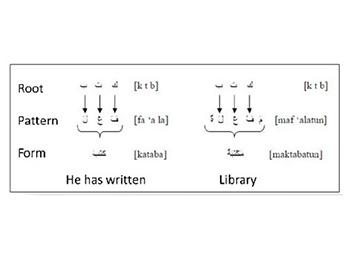
In most languages, common nouns, adjectives and verbs can take very various forms in sentences, depending on the grammatical rules of the language. This is especially true in the Arabic language, where a single root of three consonants can generate hundreds of different forms.
While traditional dictionaries cover only a small fraction of the whole range of forms found in texts, our technology has been used to generated a database of 65 000 entries with their 6 millions of forms, covering more than 98 % of the forms found in any sort of text (literature, newspaper articles etc.), the remaining 2% including proper names.
Arabic Lexicon interfaces with Unitex, which is an open source corpus processing system for language processing, developed by Gaspard Monge Laboratory (LIGM UPEM).
Unitex Arabic has been presented to prestigious organizations, like Al-Ghazali Institute of La Grande Mosquée de Paris and L’Institut du Monde Arabe. It now can be used in a wide range of domains, like text editors, digitalization of printed documents, data mining in Arabic web contents and e-learning of Arabic.
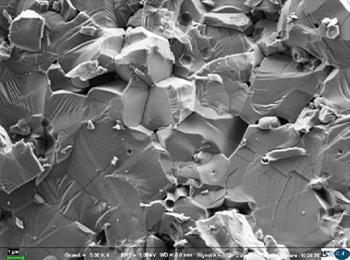
Boron phosphides (BP and B12P2) are characterized by high hardness (Hv > 30GPa), low density, high thermal conductivity and a high thermal and chemical stability (up to 1500K in air).
They can be used in many industries including automotive, mechanical engineering and mining as cutting tools, construction part or wear-resistant coatings.
However, these promising two materials are not yet industrially used because of the lack of mass production method. Currently polycrystalline boron phosphides powders are traditionally synthesized by slow processes requiring toxic and aggressive reagents and high energy.
Two new approaches of producing boron phosphide powders have been discovered and patented. These 2 processes, SHS (Self-Propagating High-Temperature Synthesis) and mecanochemistry, enable to synthesize either BP or B12P2 nanopowders with high purity (>97%), from readily available and non-toxic reagents. These new fast, safe, reproducible and scalable syntheses now enable the development of a wide use of boron phosphides.
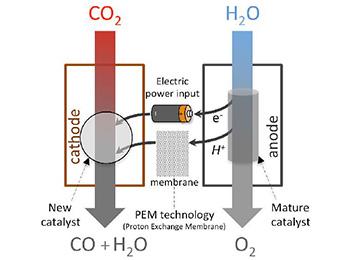
CO2 is a highly stable molecule that needs a lot of energy in order to be transformed and react with other molecules. Hence, CO2 utilization by the industry has remained limited. However, one could see CO2 as a source of carbon and use this material to store energy by breaking C-O bonds and making energy-rich C-H bonds instead. Over the past 20 years, thousands of scientific articles about CO2 catalyzed reduction have been published but the reported catalysts are either based on rare materials (such as Pd, Re, Ru) or show poor performances. In contrast, our PEM technology based on iron porphyrin catalysts is very promising since it does not rely on rare materials and has proved excellent performances to turn CO2 into CO at ambient temperatures both in organic and neutral pH aqueous solutions. Electrogenerated CO could be further processed with green hydrogen for synthetic fuel production.
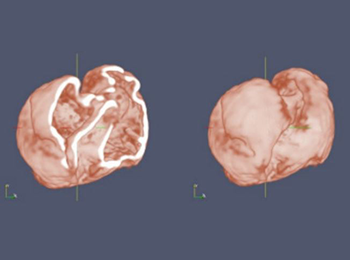
While 3D imaging of adherent cells is provided with almost all microscopes, there is currently no reliable and reproducible method for the non-adherent cells. The device presently proposed combines a microfluidic circuit, an electromagnetic field generator and a control software. The combination of these three elements allows studying the cell and its environment in three dimensions while minimizing the exogenous constraints. This solution opens up new fields of basic research in embryology (i.e. monitoring the fusion of gametes), hematology (i.e. liquid cancers) and microbiology.
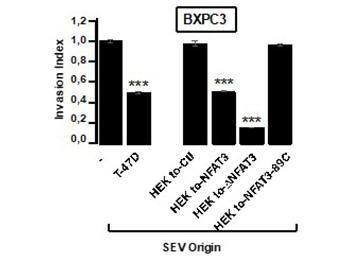
Pancreatic ductal adenocarcinoma (PDAC) is the fourth leading cause of mortality in western countries. The prognosis for pancreatic cancer patients is very low. Patients with locally advanced disease have a median survival time of 8 to 12 months, which drops to 3 to 6 months with distant metastasis. Surgical resection is potentially the only curative treatment approach but possible in only 20% of patients. Gemcitabine has become the standard-of-care treatment in 1997 for resected pancreatic cancer patients, as well as locally-advanced and metastatic setting, either as a monotherapy or in combination (with Abraxane or Tarceva). However, benefits are limited, and primary goals of treatment for advanced pancreatic cancer remain palliation and lengthened survival.
The present offer relates to the use of therapeutic exosomes as an advanced pancreatic cancer treatment and metastasis inhibition. These exosomes are produced from non-tumoral cells (HEKs) that highly express NFAT3, a transcription factor known to decrease cancer cell motility. In vitro evaluation revealed that these exosomes significantly decreased (up to 80%) the invasive capacity of solid tumor cancer cells in a pancreatic cell line (BXPC3). Preliminary in vivo experiments in a xenograft model of PDAC in nude mice are ongoing. This exosome based therapy can be considered as a new promising strategy.
Erganeo se tient à votre écoute.